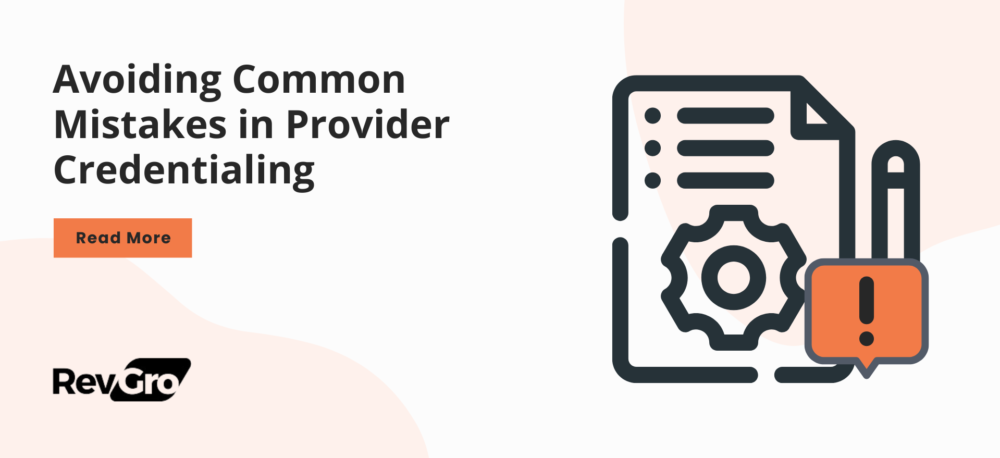
Avoiding Common Mistakes in Provider Credentialing
Introduction
Importance of Thorough Documentation
One of the most common mistakes in credentialing is incomplete documentation. Documentation is necessary since this is the cornerstone in credentialing and establishes qualification and legitimacy of healthcare professionals.
Complete and precise documentation would mean that credentialing bodies can verify a provider’s credentials without undue delay. Missing documents can result in long processing times, which would further delay the provider’s time to see patients and be able to generate revenue.
Commonly Overlooked Documents related to Credentialing Application
There are many documents that can fall through the cracks during the credentialing process. Some common ones include:
The only way to avoid these errors is to have a complete checklist that matches each provider and to cross-check all submitted documents against this list. Contact us for the comprehensive document checklist.
Missed Deadlines
There could be many deadlines when it comes to credentialing—deadlines for the first applications, periodic renewals, etc. Missed deadlines could result in a huge loss of revenue to your health care practice.
The failure to meet credentialing deadlines will result in loss of revenue and potential gaps in patient care, thereby affecting patient satisfaction and trust.
To avoid missing deadlines, implement a robust tracking system. Use a digital calendar with important date alert systems and preferably invest in credentialing software because it will automate alerts for reminders as well as manage all the deadlines of credentialing. Appoint a key person looking at the timelines for credentialing who can be ensured that everything reaches the deadline. Additionally, outsourcing credentialing services can be a smart move, as specialized companies have the expertise and resources to manage this process efficiently, ensuring that all deadlines are met without burdening your internal staff.
Submitting Inaccurate Information
While filling a credentialing application, there can be errors related to spelling mistakes, old addresses, and even feeding the wrong licensing information.
What may seem like a small inaccuracy might carry huge implications for a credentialing process, thereby causing a large delay or even a complete denial of the process. Credentialing bodies depend upon precise information in verifying a provider’s credentials, and disparities can cause a need for extra verification steps, further slowing down the procedure.
Common Areas Where Errors Often Occur
Failure to Follow Up
Any issue can be detected early and resolved, so it keeps any delay from happening throughout the process. It also portrays to credentialing bodies that the practice is proactive and organized, which might accelerate the process of approval.
How to Follow Up Effectively with Credentialing Bodies
Realistic Time Frames for Credentialing
Credentialing is quite a timely affair and may last for several months. Missing the required time may lead to rushing applications, which could result into higher chances of more errors.
Realistically, credentialing can take place from between 60 to 180 days, depending on the level of background on the provider and the effectiveness of the credentialing body. This is a factor in planning that should be put into consideration when thinking about new provider orientation.
Issues that can further slow the credentialing process:
Planning Well in Advance for Unforeseen Circumstances
Conclusion
Staying away from common provider credentialing errors is necessary for the financial viability of a health care practice and also to achieve operational excellence. The ways to eliminate the clogs in the process to ensure a delay time related to processing can be avoided are getting hold of complete documentation, meeting the deadlines and submitting accurate info, thorough follow up, and scheduling enough processing time. These implementation strategies will not only enhance the credentialing experience but also provide improvement overall to the efficiency of your practice.
Take your credentialing process to another level and obtain professional help with RevGroMD experts. We’ll work diligently to ensure you are credentialed promptly and accurately so you can get on with business and do what you do best: taking good care of your patients.
